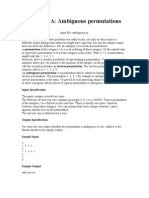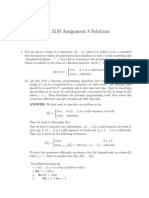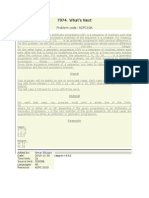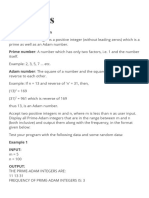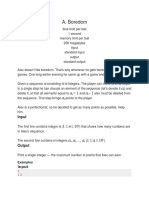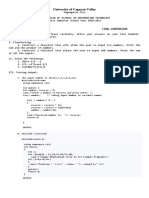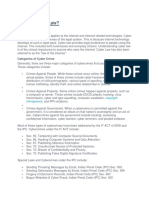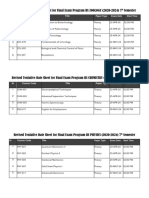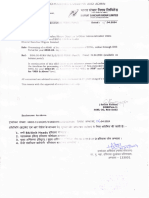0% found this document useful (0 votes)
37 views6 pagesWeek 1 CP
The document contains questions about the time complexity of algorithms and strategies for various games.
For question 1, the time complexity of the function is O(n log n) as the outer for loop iterates n times and the inner while loop iterates log n times on average due to the doubling in the value of j each iteration.
Question 8 asks about the winning strategy for player B in a game where players take turns adding 1-5 to the current number and the first to reach 50 wins. The best strategy for B is to always add 5 to make it harder for A to reach 50.
Question 9 describes a coin game where two players take turns selecting coins from the ends of a row. The best strategy
Uploaded by
lki06343Copyright
© © All Rights Reserved
We take content rights seriously. If you suspect this is your content, claim it here.
Available Formats
Download as PDF, TXT or read online on Scribd
0% found this document useful (0 votes)
37 views6 pagesWeek 1 CP
The document contains questions about the time complexity of algorithms and strategies for various games.
For question 1, the time complexity of the function is O(n log n) as the outer for loop iterates n times and the inner while loop iterates log n times on average due to the doubling in the value of j each iteration.
Question 8 asks about the winning strategy for player B in a game where players take turns adding 1-5 to the current number and the first to reach 50 wins. The best strategy for B is to always add 5 to make it harder for A to reach 50.
Question 9 describes a coin game where two players take turns selecting coins from the ends of a row. The best strategy
Uploaded by
lki06343Copyright
© © All Rights Reserved
We take content rights seriously. If you suspect this is your content, claim it here.
Available Formats
Download as PDF, TXT or read online on Scribd
/ 6











